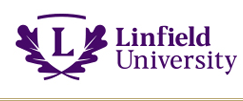Semiotics & Ideology in the Visual Rhetoric of the Black Panther Party
Faculty Sponsor
Brenda DeVore Marshall
Location
Jereld R. Nicholson Library
Date
5-11-2012 3:00 PM
End Date
5-11-2012 4:30 PM
Subject Area
Communication Arts/Rhetoric
Description
This essay presents an analysis of the way in which Emory Douglas influenced the public perception of the Black Panther Party through the use of the visual image as a rhetorical device. The purpose of this study was to discover how features of Douglas’ artwork, as illustrated in one of his posters, presented an alternative way for the black community to view itself and the cultural implications of this form of protest. The second goal was to identify ideologies in the artwork and their significance within the context of the Black Panther Party’s platform. The analysis led to the conclusion that visual rhetoric was vital to the success of the Black Panthers. Working with a combination of the visual and the linguistic helped the group to reach a large audience and to convey their desire to fundamentally change the social order that existed in the 1960s.
Recommended Citation
Vaglica, Phillip A., "Semiotics & Ideology in the Visual Rhetoric of the Black Panther Party" (2012). Humanities and Creative Projects. Event. Submission 11.
https://digitalcommons.linfield.edu/studsymp_cr/2012/all/11
Semiotics & Ideology in the Visual Rhetoric of the Black Panther Party
Jereld R. Nicholson Library
This essay presents an analysis of the way in which Emory Douglas influenced the public perception of the Black Panther Party through the use of the visual image as a rhetorical device. The purpose of this study was to discover how features of Douglas’ artwork, as illustrated in one of his posters, presented an alternative way for the black community to view itself and the cultural implications of this form of protest. The second goal was to identify ideologies in the artwork and their significance within the context of the Black Panther Party’s platform. The analysis led to the conclusion that visual rhetoric was vital to the success of the Black Panthers. Working with a combination of the visual and the linguistic helped the group to reach a large audience and to convey their desire to fundamentally change the social order that existed in the 1960s.

